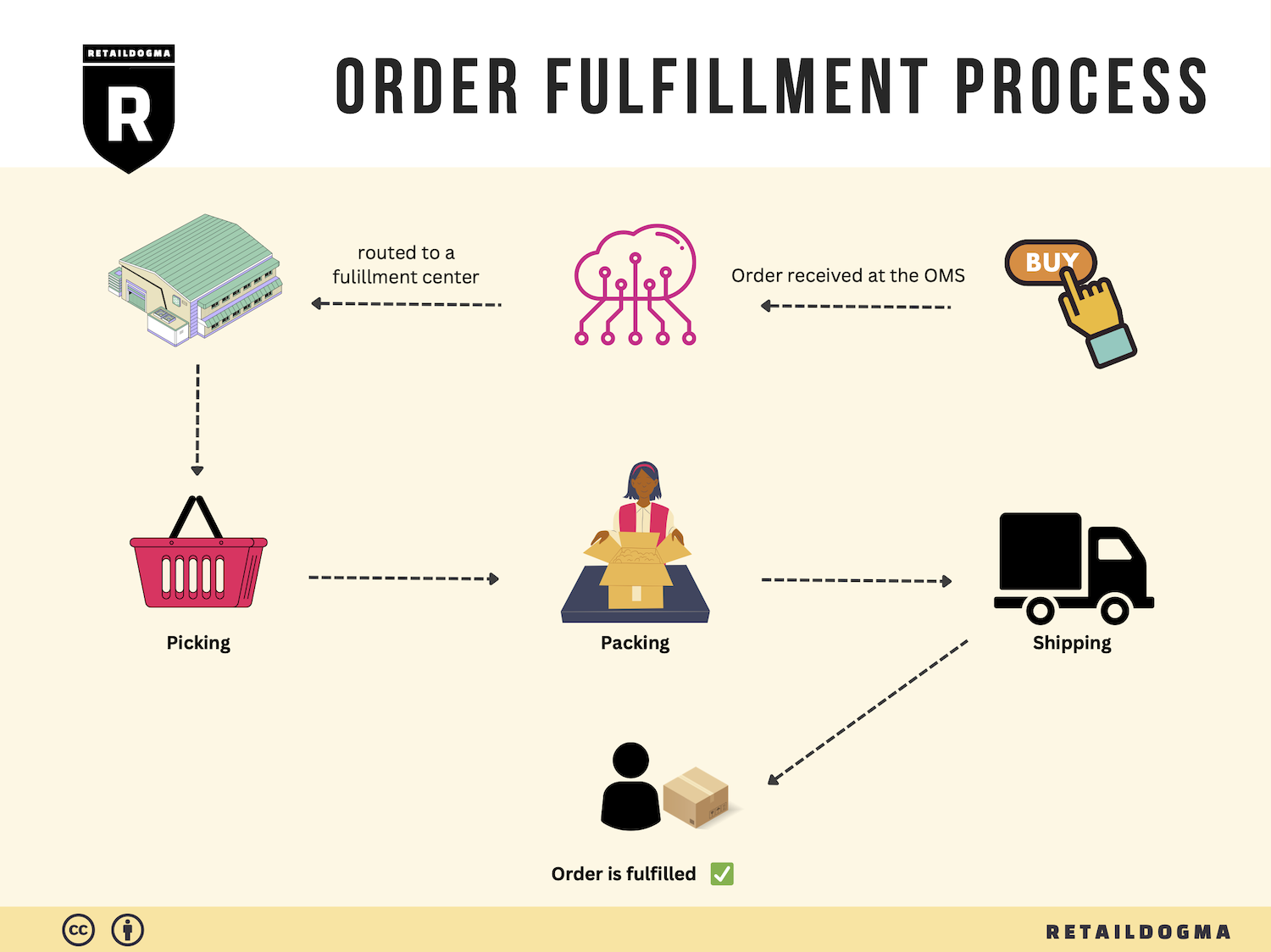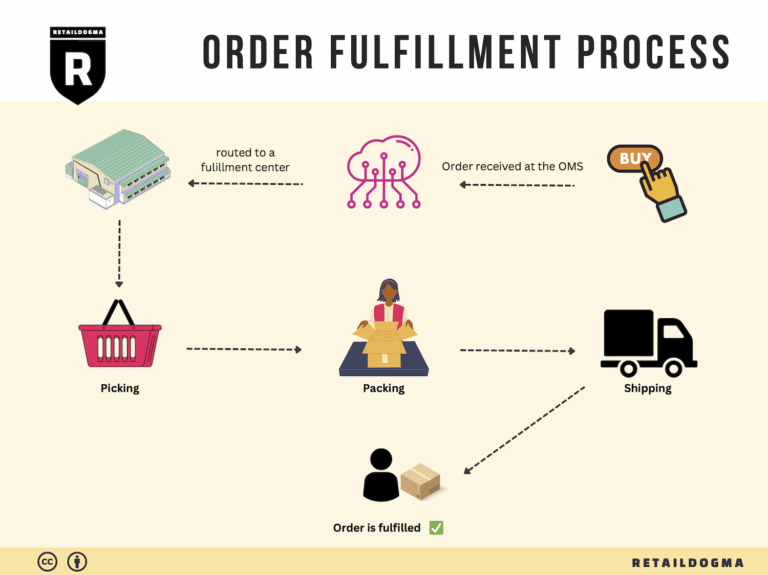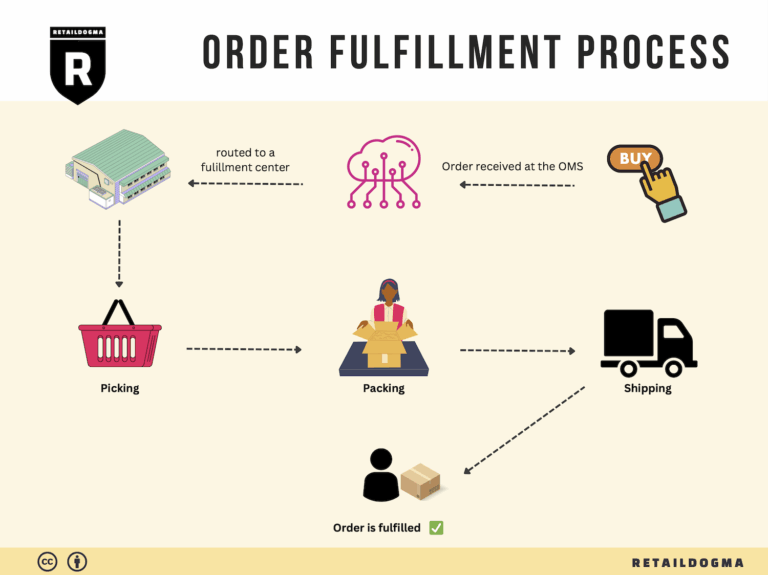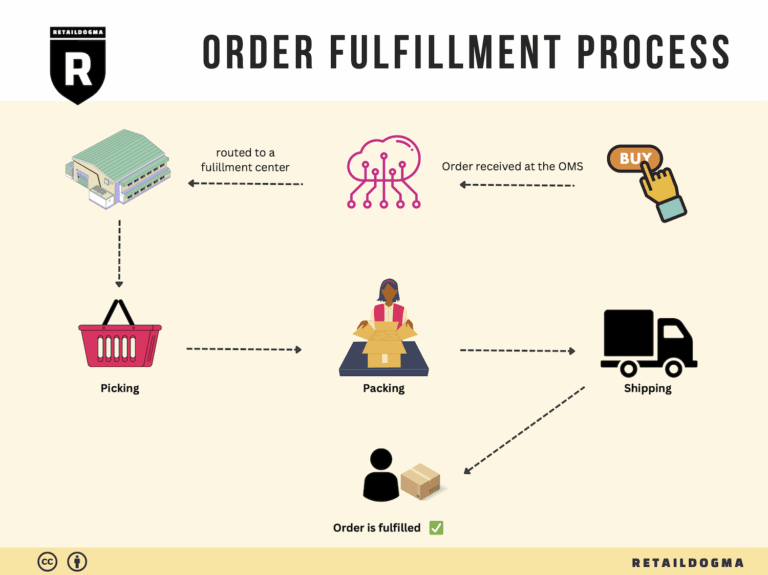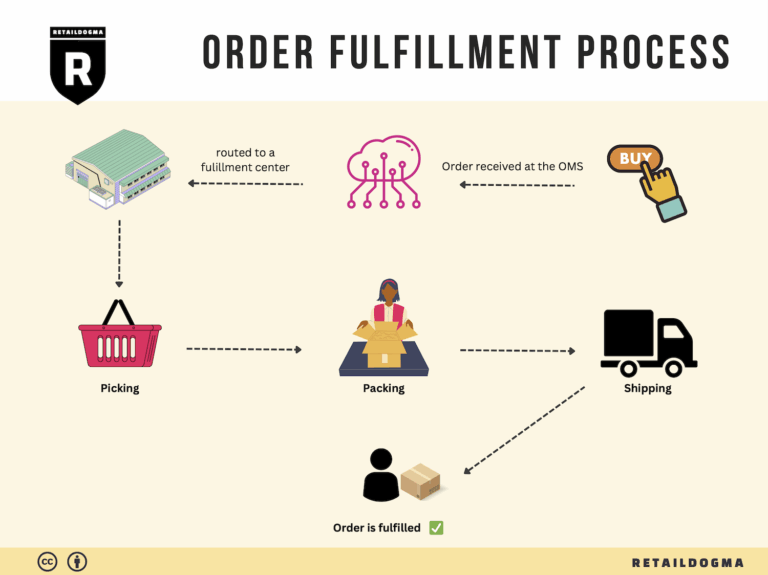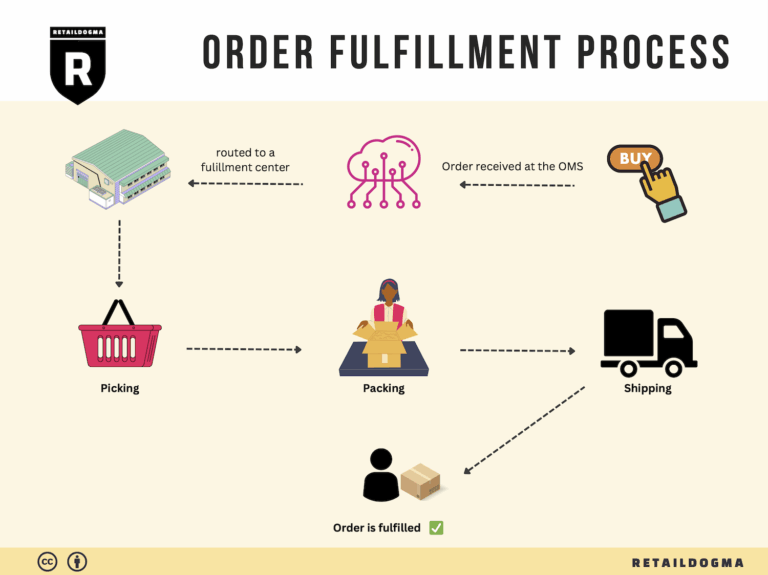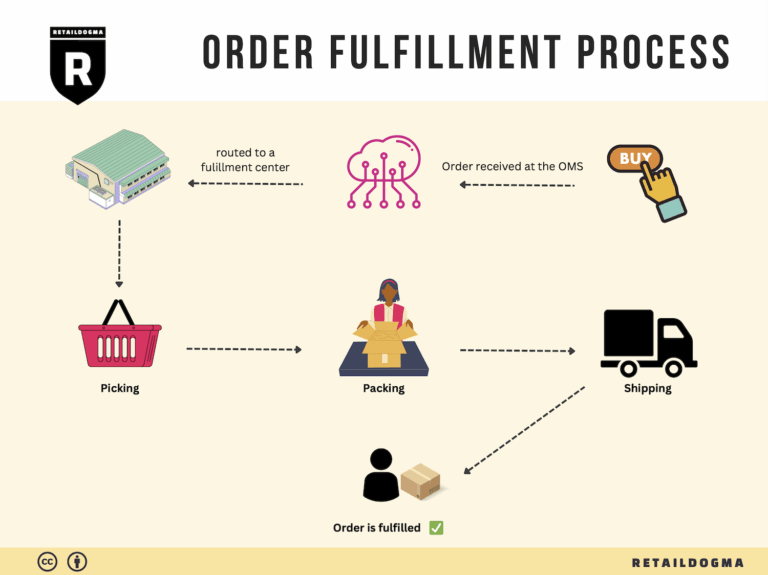Ecommerce Fulfillment Services: The Ultimate Guide (2025)
What is E-commerce Fulfillment? An Introduction for Growing Businesses
Understanding the Challenges of Order Fulfillment
For many growing e-commerce businesses, the excitement of receiving new orders can quickly turn into a daunting challenge. As sales increase, the logistics of packing and shipping products can become overwhelming. Managing inventory, ensuring timely deliveries, and maintaining customer satisfaction are critical, yet often complex tasks that require careful attention and resources. Without a well-structured fulfillment process, even the best marketing efforts can falter, leading to frustrated customers and lost sales.
Defining E-commerce Fulfillment
At its core, e-commerce fulfillment is the process of getting a product from your warehouse or fulfillment center to the customer’s doorstep. This encompasses various activities, including inventory management, order processing, picking, packing, shipping, and handling returns. Each step is crucial in ensuring that customers receive their orders accurately and on time, which directly impacts your brand’s reputation and profitability.
What This Guide Covers
In this comprehensive guide, we will explore the essential aspects of e-commerce fulfillment, helping you navigate the complexities of logistics as your business scales. Key topics include:
-
Fulfillment Models: We’ll examine different fulfillment models, such as Third-Party Logistics (3PL) and Fulfillment by Amazon (FBA), to help you understand which might best suit your business needs.
-
Core Services: Learn about the core services involved in the fulfillment process, from inventory storage and order processing to shipping and returns management.
-
Choosing a Partner: Discover practical tips for selecting the right fulfillment partner, including what to look for in terms of reliability, technology, and cost-effectiveness.
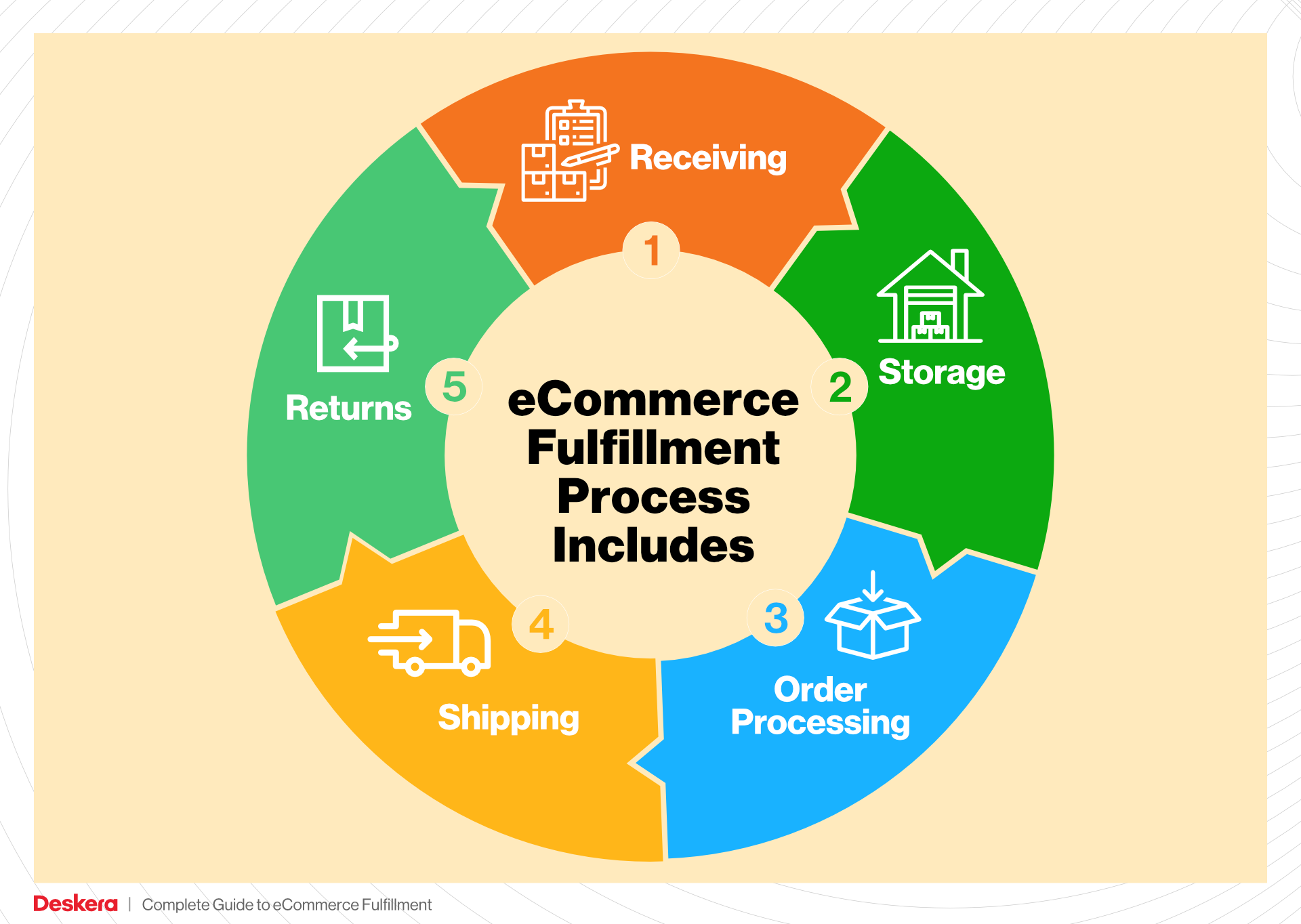
-
Pricing Strategies: Gain insights into pricing structures and how to calculate fulfillment costs to ensure that your logistics remain profitable.
Empowering Smart Logistics Decisions
Our goal is to empower you with the knowledge and tools needed to make informed decisions about your fulfillment strategy. As e-commerce continues to evolve, having a robust fulfillment process in place will not only enhance customer satisfaction but also position your business for sustainable growth. Whether you are just starting to explore fulfillment options or looking to refine your existing processes, this guide will serve as a valuable resource on your journey toward efficient logistics management.
What You’ll Learn In This Guide
- What is E-commerce Fulfillment? An Introduction for Growing Businesses
- The Order Fulfillment Process: From ‘Buy’ Button to Customer’s Door
- Comparing Fulfillment Models: In-House vs. 3PL vs. Dropshipping
- A Deep Dive into Amazon FBA: Pros, Cons, and Who It’s For
- Core Services Offered by Fulfillment Centers
- How to Choose a Fulfillment Partner: A 6-Point Checklist
- Understanding Fulfillment Pricing: A Breakdown of Common Fees
- Frequently Asked Questions (FAQs) about Fulfillment
- Conclusion: Is Outsourcing Fulfillment the Right Move for Your Business?
- Important Disclaimer
The Order Fulfillment Process: From ‘Buy’ Button to Customer’s Door
1. Receiving Inventory
The first step in the order fulfillment process is receiving inventory. This involves accepting goods from various sources, which could be suppliers, manufacturers, or other company locations. Upon arrival, the inventory must be counted, inspected for quality, and recorded into the inventory management system. This is where the use of Stock Keeping Units (SKUs) becomes crucial. SKUs uniquely identify each product and facilitate tracking throughout the fulfillment process.
Why is this step important? Proper receiving ensures that businesses maintain accurate inventory levels, which directly impacts order processing and customer satisfaction. If inventory is not accurately accounted for, it can lead to stockouts or overstock situations, both of which can damage customer trust and increase operational costs. Efficient receiving lays the groundwork for a smooth fulfillment cycle, making it a pivotal aspect of order management.
2. Warehouse Storage
Once the inventory is received and recorded, it is moved to the warehouse storage area. Here, items are organized based on their SKU information and other relevant criteria, such as size, weight, and demand frequency. The goal is to optimize space and ensure easy access for future order picking. This is often referred to as inventory organization.
The importance of this step cannot be overstated. Efficient warehouse storage minimizes the time spent searching for products during the picking process and reduces the risk of errors. Proper organization also helps in maintaining inventory integrity, ensuring that items remain in good condition until they are shipped. For businesses looking to scale, investing in warehouse management systems (WMS) can streamline this step, providing real-time data on inventory levels and locations.
3. Order Picking
Order picking is the process of selecting items from the warehouse to fulfill a customer order. This can be done manually by warehouse staff or through automated systems, depending on the size and complexity of the operation. The order picking process typically utilizes pick lists, which detail the items needed for each order, including their specific locations within the warehouse.
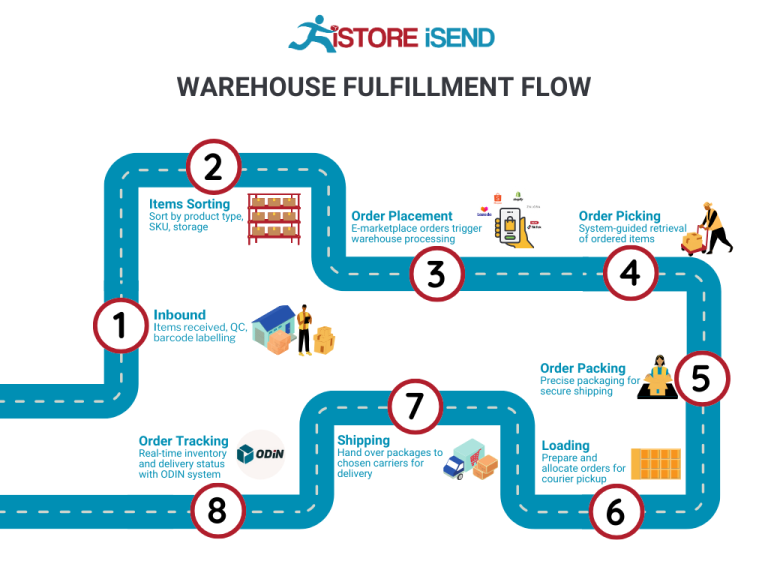
This step is critical because it directly affects the speed and accuracy of order fulfillment. Errors in picking can lead to incorrect shipments, resulting in customer dissatisfaction and increased return rates. Efficient order picking methods, such as batch picking or zone picking, can enhance productivity and reduce labor costs. For businesses aiming to improve their fulfillment speed, investing in training and technology to optimize the picking process is essential.
4. Order Packing
Once items have been picked, they move to the packing stage. Here, products are carefully packaged to ensure they reach the customer in perfect condition. This process often involves selecting appropriate packing materials and optimizing the dimensions of the package to minimize shipping costs—commonly referred to as Dimensional Weight Pricing.
The packing step is significant for several reasons. First, it protects the product during transit, reducing the likelihood of damage and returns. Second, well-packed orders can enhance the customer experience, reflecting professionalism and care. Including return shipping materials in the package also facilitates a smooth returns process, which is increasingly important in e-commerce. For businesses looking to scale, investing in automated packing solutions can increase efficiency and reduce costs.
5. Shipping & Delivery
The final step in the order fulfillment process is shipping and delivery. Once the package is packed, it is handed over to a carrier for transportation to the customer. This step may involve multiple carriers, especially for last-mile delivery, where local postal services might be used for final delivery to remote areas.
Shipping and delivery are crucial for customer satisfaction. Timely delivery can significantly impact a customer’s perception of the brand, while delays can lead to frustration and lost sales. Therefore, businesses should consider using tracking systems to provide customers with real-time updates on their order status. Additionally, optimizing shipping routes and selecting the right carriers can reduce costs and improve delivery times. For those looking to scale, establishing strong relationships with reliable carriers and employing logistics management software can enhance the shipping process.
In conclusion, understanding and optimizing each step of the order fulfillment process is vital for e-commerce businesses. By focusing on efficient inventory receiving, storage, picking, packing, and shipping, businesses can enhance customer satisfaction, improve operational efficiency, and ultimately drive growth.
Comparing Fulfillment Models: In-House vs. 3PL vs. Dropshipping
Comparison of Fulfillment Models
| Model | Who Handles Inventory | Best For (Business Stage) | Key Advantage | Key Disadvantage |
|---|---|---|---|---|
| In-House Fulfillment | The business itself | Startups to mid-sized businesses | Full control over inventory and processes | High overhead costs and complexity |
| Third-Party Logistics (3PL) | An external logistics provider | Growing businesses and enterprises | Scalability and cost-efficiency | Less control over the fulfillment process |
| Dropshipping | Supplier or manufacturer | New e-commerce businesses | Low upfront investment and risk | Lower profit margins and potential quality issues |
In-House Fulfillment
In-house fulfillment involves managing all aspects of the order fulfillment process internally. This model is often employed by startups and mid-sized businesses that want complete control over their inventory and customer experience. By handling inventory, order processing, packing, and shipping themselves, companies can ensure that their brand’s standards are met at every stage. The primary advantage of in-house fulfillment is the direct oversight it provides. Businesses can implement custom packaging, quality control measures, and offer personalized customer service, which can enhance brand loyalty and customer satisfaction.
However, in-house fulfillment comes with significant challenges. The costs associated with warehousing, staffing, and logistics can escalate quickly, particularly as a business grows. Additionally, managing the complexities of inventory management, order processing, and shipping can distract from core business activities like marketing and product development. As a result, while in-house fulfillment may be suitable for businesses just starting out or those with lower order volumes, it may become unsustainable as the company scales.
Third-Party Logistics (3PL)
Third-party logistics (3PL) refers to the outsourcing of logistics and fulfillment operations to an external provider. This model is particularly advantageous for growing businesses and larger enterprises that require flexibility and scalability without the burden of managing logistics in-house. A 3PL partner handles inventory storage, order processing, packing, and shipping, allowing businesses to focus on their core competencies.
The primary benefit of using a 3PL is the ability to scale operations quickly in response to market demand. As order volumes increase, 3PL providers can adjust their services accordingly, providing access to advanced logistics technologies and expertise that may not be feasible for individual businesses to develop on their own. However, this model does come with a trade-off: businesses relinquish some control over the fulfillment process. This can lead to variability in service quality and potential misalignments with brand values. Moreover, the reliance on a third party introduces risks related to communication and coordination that can affect customer satisfaction.
Dropshipping
Dropshipping is a fulfillment model where the retailer does not hold inventory but instead transfers customer orders directly to a supplier or manufacturer, who then ships the products directly to the customer. This model is particularly appealing for new e-commerce businesses that want to minimize upfront investments and financial risks. Because the retailer does not need to invest in inventory or warehouse space, they can focus on marketing and customer acquisition.
The key advantage of dropshipping lies in its low barrier to entry; entrepreneurs can launch an online store without the significant capital typically required for inventory. However, this model also presents challenges. Profit margins can be lower compared to traditional retail models, as suppliers often take a cut of the sales. Additionally, dropshipping can lead to quality control issues, as the retailer has limited oversight over the product and fulfillment process. Problems such as shipping delays, damaged products, or miscommunication with suppliers can harm the retailer’s reputation. Therefore, while dropshipping offers an attractive way to enter the market, businesses must carefully choose reliable suppliers and maintain strong customer service practices to mitigate potential issues.
Conclusion
Choosing the right fulfillment model is crucial for e-commerce businesses looking to scale effectively. In-house fulfillment offers control but can be costly and complex, making it suitable for smaller operations. Third-party logistics (3PL) provides scalability and efficiency, ideal for growing businesses, but comes with less control. Dropshipping minimizes risk and investment, which is advantageous for startups, yet it carries challenges related to margins and quality. By evaluating these models against their business stage, operational capabilities, and customer expectations, e-commerce owners can make informed decisions that align with their growth strategies.
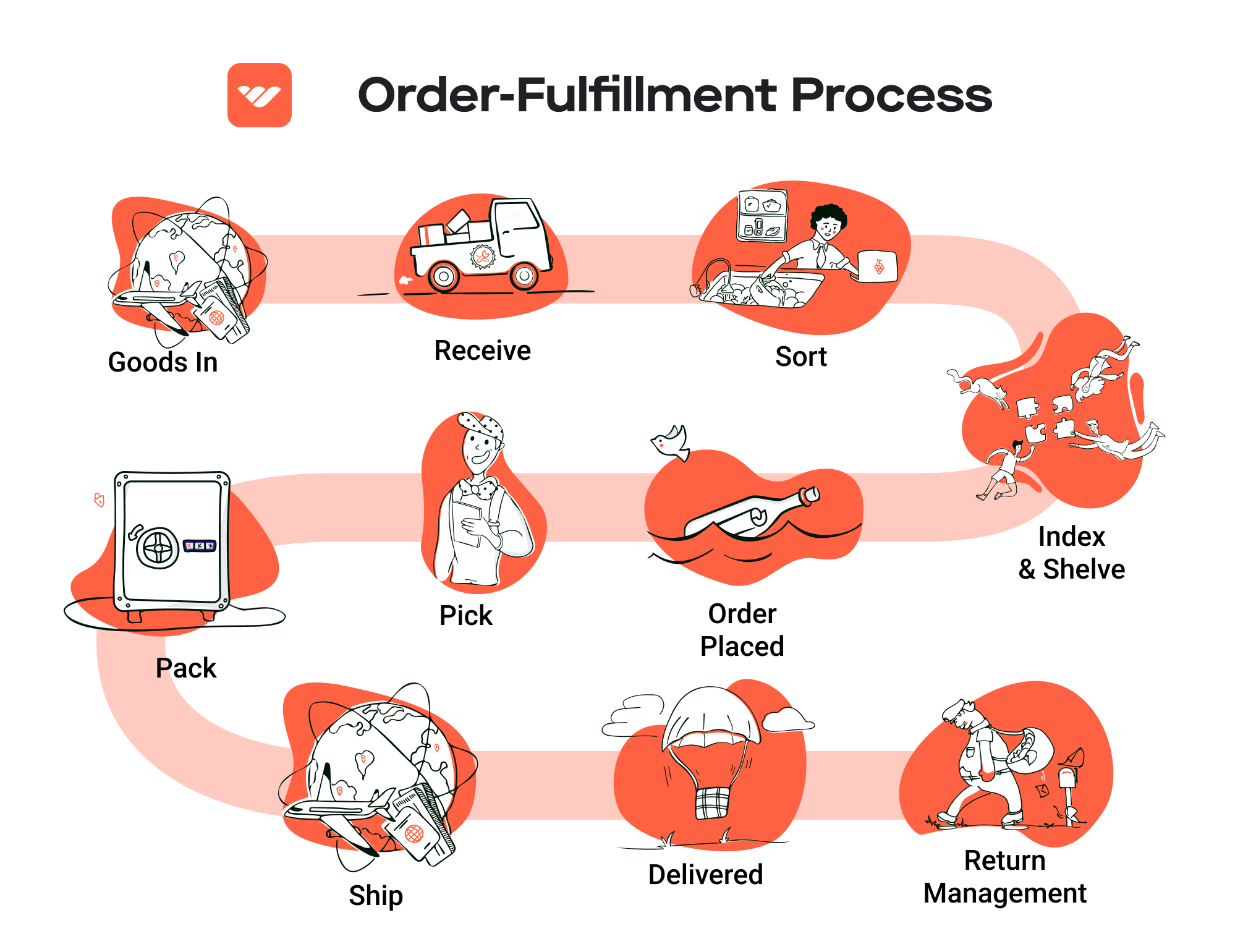
A Deep Dive into Amazon FBA: Pros, Cons, and Who It’s For
What is Fulfillment by Amazon (FBA)?
Fulfillment by Amazon (FBA) is a service offered by Amazon that allows sellers to store their products in Amazon’s fulfillment centers. Amazon takes care of the storage, packaging, and shipping of these products, as well as customer service and returns. This service enables sellers to leverage Amazon’s extensive logistics network and customer base, making it an attractive option for e-commerce businesses of all sizes.
When a customer orders a product listed under FBA, Amazon picks, packs, and ships the product directly to the customer. This not only streamlines the order fulfillment process for sellers but also enhances the customer experience by ensuring quick and reliable shipping.
How FBA Works
- Sign Up: Sellers create an Amazon seller account and enroll in the FBA program.
- Product Listing: Sellers list their products on Amazon and select FBA as the fulfillment option.
- Shipping Inventory: Sellers ship their products to Amazon’s fulfillment centers. Amazon provides guidelines on packaging and shipping.
- Storage: Once received, the products are stored in Amazon’s warehouses until sold.
- Order Processing: When a customer places an order, Amazon automatically handles the picking, packing, and shipping of the product.
- Customer Service: Amazon manages all customer service inquiries and returns for FBA orders.
- Payments: Sellers receive payments for their sales, minus Amazon’s fees.
Pros of Using FBA
Prime Eligibility
One of the major advantages of FBA is that it makes your products eligible for Amazon Prime. This can significantly boost sales, as Prime members tend to prefer products that offer free two-day shipping. The Prime badge also enhances product visibility and trustworthiness.
Customer Trust
When customers see that a product is fulfilled by Amazon, it instills a sense of trust. Amazon’s reputation for reliable shipping and customer service can lead to higher conversion rates for sellers. This is especially beneficial for new sellers who may not yet have an established brand reputation.
Multi-Channel Fulfillment
FBA allows sellers to fulfill orders not just from Amazon, but also from their own websites or other sales channels. This means that if you have a presence on platforms like eBay or Shopify, you can still use Amazon’s logistics capabilities to handle your shipping, making it easier to manage inventory across multiple platforms.
Scalability
FBA provides a scalable solution for businesses looking to grow. As sales increase, sellers can easily send more inventory to Amazon without worrying about the logistics of storage and shipping. This allows businesses to focus on marketing and product development rather than fulfillment challenges.
Global Reach
FBA enables sellers to reach customers worldwide, as Amazon has fulfillment centers in various countries. This global infrastructure allows sellers to tap into international markets without the complexities of managing their own logistics.
Cons of Using FBA
High Fees
While FBA provides many benefits, it comes with a cost. Amazon charges various fees, including storage fees for the inventory stored in their warehouses and fulfillment fees for each order shipped. These fees can add up quickly, particularly for businesses with lower profit margins.
Strict Inventory Rules
FBA has stringent inventory requirements that sellers must adhere to. For example, products must be packaged and labeled according to Amazon’s specifications, and there are limits on the amount of inventory that can be stored in fulfillment centers. Failure to comply can result in additional fees or even the inability to use FBA.
Commingling Risks
FBA operates on a commingling model, meaning that your inventory may be mixed with that of other sellers. While this can streamline the fulfillment process, it also carries risks. If a customer returns a defective product, it may be difficult to trace that product back to the original seller, potentially affecting your seller rating and returns.
Limited Control Over Branding
With FBA, sellers have limited control over the packaging and presentation of their products. Amazon’s branding is prominent, which may dilute your brand’s identity. If maintaining a specific brand image is crucial to your business, this could be a significant drawback.
Dependency on Amazon
Using FBA means that your business is dependent on Amazon’s policies and infrastructure. Changes in Amazon’s fees, rules, or algorithms can have a direct impact on your business operations and profitability.
Who is FBA Best For?
FBA is particularly well-suited for:
- Small to Medium-Sized Businesses: Sellers looking to grow their sales without the overhead of managing their own fulfillment operations can benefit significantly from FBA.
- New Sellers: For entrepreneurs just starting out, FBA provides an opportunity to leverage Amazon’s brand and logistics capabilities to gain traction in a competitive marketplace.
- Businesses with Limited Resources: Companies that lack the infrastructure or staff to handle order fulfillment can streamline their operations by using FBA.
- Sellers with High Volume: Businesses that anticipate high sales volume can benefit from the efficiency and scalability that FBA offers.
- Brands Looking to Expand: Companies seeking to reach international markets without the complexities of global shipping logistics can use FBA to facilitate this expansion.
In conclusion, while Fulfillment by Amazon presents a range of benefits, including enhanced customer trust and scalability, it also comes with challenges such as high fees and strict inventory management rules. By carefully evaluating these factors, e-commerce business owners can make informed decisions about whether FBA is the right fulfillment strategy for their needs.
Core Services Offered by Fulfillment Centers
Inventory Management & Warehousing
Inventory management and warehousing are foundational services provided by fulfillment centers, ensuring that e-commerce businesses maintain optimal stock levels while minimizing costs. This process involves receiving, storing, and organizing products within a fulfillment center’s warehouse. Advanced inventory management systems track stock levels in real-time, alerting businesses when it’s time to reorder or when items are at risk of obsolescence.
Benefits:
1. Efficiency and Accuracy: Automated systems reduce human error in inventory counts, ensuring that businesses have accurate data on stock levels. This precision is crucial for preventing stockouts or overstock situations, both of which can harm customer satisfaction and profit margins.
-
Cost Reduction: Efficient inventory management helps businesses avoid carrying excess inventory, which ties up capital and incurs storage costs. By optimizing stock levels, businesses can reduce carrying costs and improve cash flow.
-
Space Optimization: Fulfillment centers are designed to maximize storage space using advanced shelving and inventory systems, allowing businesses to store more products in a smaller area. This optimization is particularly important for e-commerce operations that may experience seasonal fluctuations in sales volume.
Pick and Pack Services
Pick and pack services involve the process of selecting items from the warehouse based on customer orders and preparing them for shipment. This service includes picking the right products, packing them securely, and labeling them for delivery. Fulfillment centers often use advanced technology, such as barcode scanning and automated picking systems, to streamline this process.
Benefits:
1. Speed and Efficiency: By leveraging technology and trained staff, fulfillment centers can process orders quickly, significantly reducing the time it takes from order placement to delivery. This speed is critical in today’s e-commerce landscape, where customer expectations for fast shipping are higher than ever.
-
Scalability: As e-commerce businesses grow, their order volume can increase dramatically. Fulfillment centers can easily scale their pick and pack operations to handle larger order volumes without the need for businesses to invest in additional labor or warehouse space.
-
Quality Control: Many fulfillment centers implement quality control checks during the pick and pack process to ensure that the correct items are shipped. This reduces the likelihood of errors and enhances customer satisfaction, as customers receive exactly what they ordered.
Kitting and Assembly
Kitting and assembly services involve grouping multiple products into a single package or preparing items for sale in a specific configuration. This could include assembling components of a product, bundling related items together, or creating custom packages for promotional purposes. This service is particularly beneficial for businesses that offer complex products or seasonal bundles.
Benefits:
1. Customization: Kitting allows e-commerce businesses to offer customized products or bundles, which can attract more customers and enhance the shopping experience. This customization can be a significant differentiator in a competitive market.
-
Reduced Handling Costs: By assembling products before they are shipped, fulfillment centers streamline the packing process, reducing the time and labor costs associated with handling individual items. This efficiency can translate into lower shipping costs and faster order processing times.
-
Enhanced Marketing Opportunities: Kitting services enable businesses to create promotional packages or limited-edition bundles that can drive sales and increase average order values. This ability to create attractive offers can enhance customer engagement and loyalty.
Returns Management (Reverse Logistics)
Returns management, or reverse logistics, is the process of handling returned items efficiently and effectively. Fulfillment centers provide services to manage product returns, including inspecting returned items, restocking them if possible, and processing exchanges or refunds. This service is vital for e-commerce businesses, as online shoppers often consider a company’s return policy before making a purchase.
Benefits:
1. Improved Customer Experience: Efficient returns management enhances customer satisfaction by making the return process seamless and hassle-free. A positive returns experience can lead to repeat purchases and customer loyalty, as customers are more likely to shop with businesses that make returns easy.
-
Cost Savings: By efficiently processing returns and restocking items, fulfillment centers can minimize the financial impact of returns on a business. This includes assessing whether returned items can be resold or need to be returned to suppliers, optimizing the overall return process.
-
Data Insights: Returns management can provide valuable insights into product performance and customer preferences. Analyzing return reasons can help businesses improve product quality, adjust inventory strategies, and refine marketing approaches to reduce future returns.
In summary, fulfillment centers provide essential services that streamline the order fulfillment process for e-commerce businesses. By leveraging inventory management, pick and pack services, kitting and assembly, and returns management, businesses can enhance operational efficiency, improve customer satisfaction, and ultimately scale their operations effectively.
How to Choose a Fulfillment Partner: A 6-Point Checklist
Location & Warehouse Network
Importance:
The geographical location of your fulfillment partner’s warehouses is crucial for optimizing shipping times and costs. A partner with strategically located warehouses can reduce transit times and provide better service to your customers, particularly if you sell in multiple regions.
Questions to Ask:
– Where are your warehouses located, and how do they align with our target customer demographics?
– What is your average shipping time to major cities or regions?
– Do you have a network of warehouses that can handle peak season demands effectively?
Technology & Integrations
Importance:
In today’s digital landscape, seamless integration between your e-commerce platform and your fulfillment partner’s system is essential for real-time inventory management, order tracking, and customer communication. A robust technology stack can streamline operations and enhance customer satisfaction.
Questions to Ask:
– What order management systems and software do you use?
– How do you integrate with popular e-commerce platforms like Shopify, WooCommerce, or Magento?
– Can you provide real-time inventory updates, and how are these communicated to us and our customers?
Specializations (e.g., cold storage, oversized items)
Importance:
Different businesses have unique needs. If your products require special handling, such as temperature-controlled storage for perishables or oversized items that need extra space, it’s vital to partner with a 3PL that specializes in these areas.
Questions to Ask:
– What types of products do you specialize in handling?
– Do you have the necessary facilities for specific requirements, like cold storage or hazardous materials?
– Can you accommodate fluctuations in demand for specialized items?
Scalability & Capacity
Importance:
As your business grows, your fulfillment needs will change. A partner that can scale with you—whether through additional warehouse space, workforce, or technological support—will be invaluable in ensuring you can meet customer demand without disruption.
Questions to Ask:
– How do you handle increases in order volume during peak seasons?
– What is your capacity for scaling operations, and how quickly can you implement changes?
– Can you provide case studies or examples of how you’ve scaled for other clients?
Pricing and Contracts
Importance:
Understanding the pricing structure and contract terms is essential for budgeting and financial planning. Transparency in pricing helps avoid unexpected costs that can eat into your margins.
Questions to Ask:
– What is your pricing model (e.g., per order, storage fees, handling fees)?
– Are there any hidden fees or additional costs we should be aware of?
– What are the terms for contract renewal, and do you offer flexibility for scaling up or down?
Customer Support & Reviews
Importance:
A strong customer support system is vital for resolving issues quickly and efficiently. Additionally, researching reviews and testimonials from other clients can provide insights into the partner’s reliability and service quality.
Questions to Ask:
– What level of customer support do you offer (e.g., dedicated account manager, 24/7 support)?
– Can you provide references or case studies from other businesses in our industry?
– How do you handle issues like order discrepancies or shipping delays, and what is your typical response time?
Conclusion
Choosing the right fulfillment partner is a critical decision that can significantly impact your business’s success. By utilizing this checklist, you can systematically evaluate potential partners based on their location, technology capabilities, specializations, scalability, pricing, and customer support. Make informed decisions to ensure that your fulfillment operations align with your business goals and customer expectations.
Understanding Fulfillment Pricing: A Breakdown of Common Fees
Initial Setup Fees
Initial setup fees are typically charged by fulfillment centers when you first engage their services. These fees cover the costs associated with onboarding your business, which may include integrating your inventory management systems with their platform, setting up your account, and configuring your operational processes to accommodate your specific needs.
The calculation of these fees can vary significantly based on the complexity of your operations. For example, if you have a straightforward product line with minimal SKUs, the initial setup might be lower—often ranging from a few hundred to a couple of thousand dollars. Conversely, businesses with numerous SKUs or specialized requirements may incur higher fees, sometimes exceeding several thousand dollars. It’s essential to inquire about what is included in these fees, as some fulfillment centers offer packages that bundle setup costs with other services.
Receiving Fees
Receiving fees are charged for the labor and resources involved in accepting and processing incoming inventory. This includes the inspection, counting, and inventory management necessary to ensure that the received goods match the order and are in acceptable condition.
These fees are typically calculated on a per-unit basis or by the hour, depending on the fulfillment center’s pricing model. For instance, you might see a fee of $0.25 to $1.00 per item received or a flat hourly rate for the labor involved. Understanding how a fulfillment center calculates receiving fees is crucial, especially if you anticipate frequent shipments or large volumes, as these costs can add up quickly.
Storage Fees (per pallet/bin)
Storage fees are incurred for the physical space your inventory occupies within the fulfillment center. These fees can vary based on the type of storage used, whether it’s per pallet, bin, or shelf space.
Most fulfillment centers charge monthly storage fees, which can range from $10 to $40 per pallet, depending on the facility’s location, size, and service level. For smaller items stored in bins, fees may be charged at a rate of $2 to $5 per bin per month. It’s important to note that storage fees can increase during peak seasons, such as holidays, due to higher demand for storage space. Keeping track of your inventory turnover rate can help you manage these costs effectively.
Pick & Pack Fees (per item/order)
Pick and pack fees are associated with the process of retrieving items from storage and preparing them for shipment. This includes selecting the items, packing them securely, and labeling them for delivery.
These fees are typically charged on a per-item or per-order basis. For example, a fulfillment center may charge $1 to $3 per item picked and packed, or a flat fee of $5 to $10 per order, regardless of the number of items. The complexity of the pick and pack operation can also influence the pricing; for instance, if your products require special packaging or handling, you may incur additional fees. Understanding these costs is vital for accurate pricing strategies and maintaining profit margins.
Shipping Fees
Shipping fees are the costs associated with transporting your products from the fulfillment center to your customers. These fees can vary based on several factors, including the shipping method (ground, express, etc.), destination, package weight, and dimensions.
Shipping fees are typically calculated by the carriers based on either the actual weight of the package or its dimensional weight (DIM weight), whichever is greater. DIM weight is calculated using the package’s length, width, and height. Rates can fluctuate based on carrier agreements, service levels, and seasonal demand, making it essential to negotiate shipping rates with your fulfillment partner and carriers.
Tips for Getting an Accurate Quote
-
Be Transparent About Your Needs: Clearly communicate your business requirements, including expected order volumes, product types, and any special handling needs. This allows fulfillment centers to provide tailored quotes that accurately reflect your needs.
-
Request a Detailed Breakdown: Ask for a comprehensive breakdown of all potential fees, including hidden costs that might arise during peak seasons or due to specific operational challenges.
-
Compare Multiple Providers: Don’t settle for the first quote. Comparing multiple fulfillment centers will not only give you a sense of the market rate but also highlight what services are included or excluded.
-
Review Contract Terms: Pay close attention to contract terms regarding fee structures, especially around storage and shipping costs, which can change seasonally or based on inventory levels.
-
Calculate Total Cost of Ownership: Evaluate the total cost of working with a fulfillment center, including all fees, to determine which provider offers the best value for your specific business model.
By understanding these common fulfillment pricing models and strategically negotiating with fulfillment partners, you can optimize your operational costs and ensure a smooth scaling process for your e-commerce business.
Frequently Asked Questions (FAQs) about Fulfillment
1. What is order fulfillment?
Order fulfillment is the process of receiving, processing, and delivering customer orders. It encompasses various steps including inventory management, order processing, packing, shipping, and handling returns. Efficient order fulfillment is crucial for customer satisfaction and overall business success.
2. Why is order fulfillment important for my business?
Order fulfillment directly impacts customer satisfaction and brand reputation. An effective fulfillment process ensures that orders are delivered accurately and on time, which is essential for retaining customers and driving repeat sales. Poor fulfillment can lead to customer dissatisfaction, negative reviews, and ultimately lost sales.
3. What are the key steps in the order fulfillment process?
The order fulfillment process typically includes the following steps:
– Receiving Inventory: Accepting and inspecting incoming products.
– Inventory Storage: Organizing products in a way that facilitates easy retrieval.
– Order Processing: Managing customer orders through software integration.
– Picking: Selecting the correct items from inventory.
– Packing: Preparing items for shipment in a cost-effective manner.
– Shipping: Distributing the package to the customer using various carriers.
– Returns Processing: Managing the return of items and restocking as necessary.
4. What’s the difference between a warehouse and a fulfillment center?
A warehouse is primarily used for storing products, whereas a fulfillment center is designed specifically for processing and shipping orders. Fulfillment centers often have advanced technology and systems in place to handle inventory management, order processing, and shipping logistics efficiently.
5. What is a 3PL (Third-Party Logistics)?
A 3PL provider is a company that offers outsourced logistics services, including order fulfillment, warehousing, and distribution. Partnering with a 3PL can help businesses scale their operations without the need to invest heavily in their own logistics infrastructure, allowing them to focus on core business activities.
6. How much do fulfillment services cost?
Fulfillment service costs can vary widely based on several factors, including the volume of orders, types of products, storage needs, and shipping methods. On average, businesses can expect to pay a combination of storage fees, pick and pack fees, and shipping costs. It’s essential to obtain quotes from multiple providers to understand the best pricing for your specific needs.
7. What challenges do businesses face in order fulfillment?
Common challenges in order fulfillment include inventory management issues (like stockouts or overstock), logistics planning failures (leading to delayed or damaged shipments), and the need for efficient returns processing. These challenges can adversely affect customer satisfaction and overall business performance.
8. How can I improve my order fulfillment process?
To enhance your order fulfillment process, consider the following strategies:
– Implement an efficient inventory management system.
– Utilize automation for order processing and picking.
– Optimize packing methods to reduce shipping costs.
– Regularly review and refine logistics partnerships.
– Invest in training for staff involved in fulfillment operations.
9. What role does technology play in order fulfillment?
Technology plays a critical role in streamlining the order fulfillment process. Systems such as ERP (Enterprise Resource Planning), WMS (Warehouse Management Systems), and OMS (Order Management Systems) help manage inventory levels, track orders in real time, and facilitate communication between different departments and partners, thereby improving overall efficiency.
10. How do I choose a fulfillment partner?
When selecting a fulfillment partner, consider factors such as:
– Their experience and reputation in the industry.
– The range of services offered (e.g., storage, packing, shipping).
– Technology capabilities and integration options.
– Pricing structure and scalability.
– Customer service quality and responsiveness.
Conduct thorough research and request references to ensure that the partner aligns with your business needs and goals.
Conclusion: Is Outsourcing Fulfillment the Right Move for Your Business?
Evaluating the Benefits of Outsourcing Fulfillment
Outsourcing your order fulfillment can be a transformative decision for e-commerce businesses looking to scale. One of the most significant advantages is time savings. By delegating the complexities of warehousing, inventory management, and shipping to a specialized partner, you free up valuable resources to focus on core business strategies, marketing, and customer engagement. This shift not only enhances operational efficiency but also allows you to respond more swiftly to market demands.
Scalability is another compelling reason to consider a fulfillment service. As your business grows, so do the complexities of managing inventory and processing orders. A capable fulfillment partner can adapt to your evolving needs, whether you’re experiencing seasonal spikes or long-term growth. This flexibility means you can scale operations without the burden of investing in additional infrastructure or staffing.
Moreover, partnering with a fulfillment service brings expertise to the table. These providers have honed their operations over time, implementing best practices in logistics, technology, and customer service. Their knowledge can help mitigate common pitfalls, such as inventory shortages or shipping delays, which are crucial for maintaining your brand’s reputation and customer satisfaction.
However, the importance of choosing the right partner cannot be overstated. A misaligned fulfillment partner can hinder your growth rather than support it. Therefore, conducting thorough research and evaluating potential partners based on their capabilities, customer service, and technological offerings is essential.
Take Action Now
To determine if outsourcing fulfillment is the right next step for your business, consider conducting an audit of your current shipping processes. Assess your operational pain points, customer feedback, and growth objectives. This evaluation will provide clarity on whether a fulfillment partner could enhance your efficiency and help you meet your business goals.
Important Disclaimer
⚠️ Important Disclaimer
The information in this guide is for educational purposes. Fulfillment services, pricing, and platform features change frequently. Always conduct your own due diligence and consult with providers directly before making business decisions.
